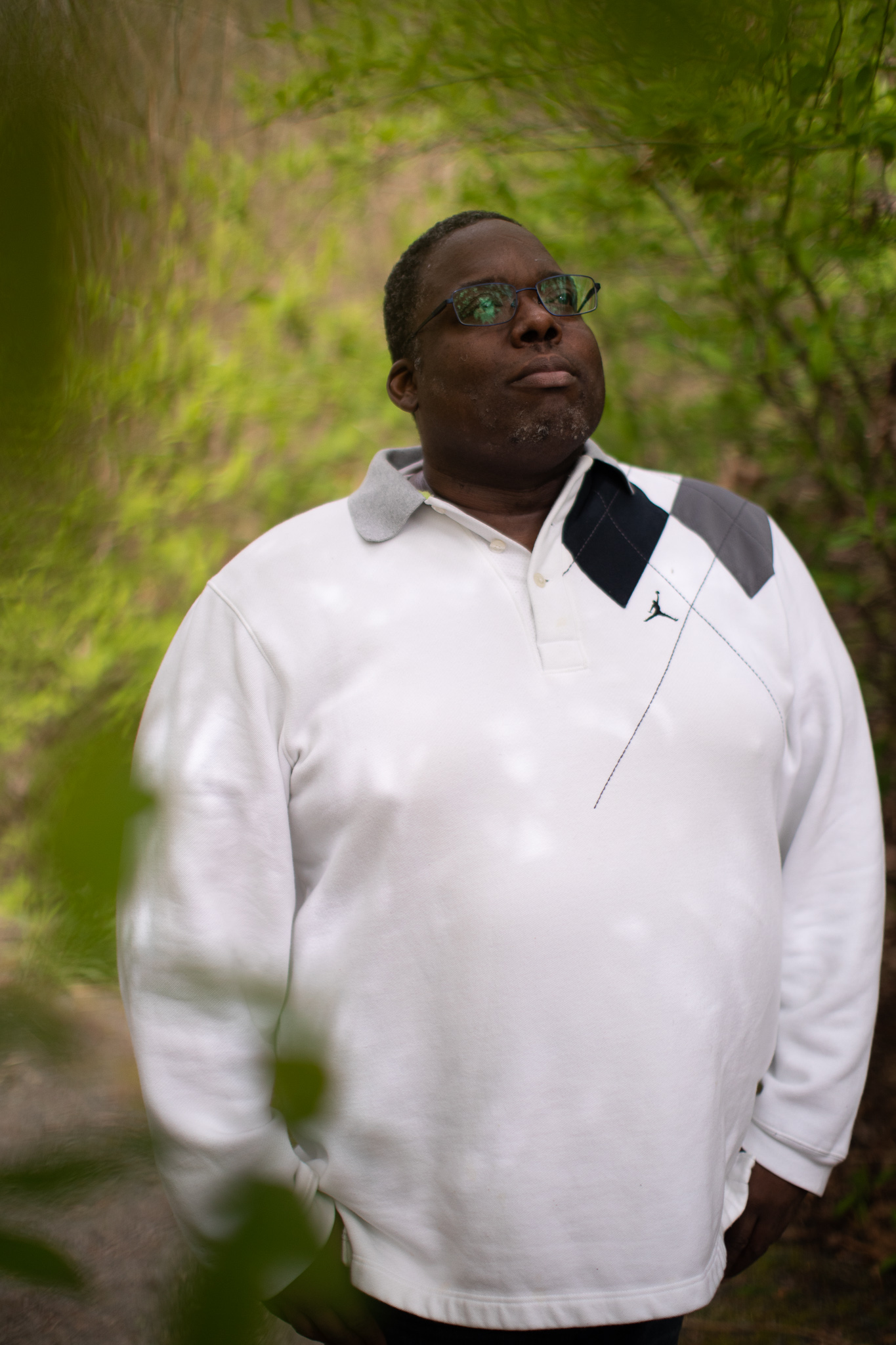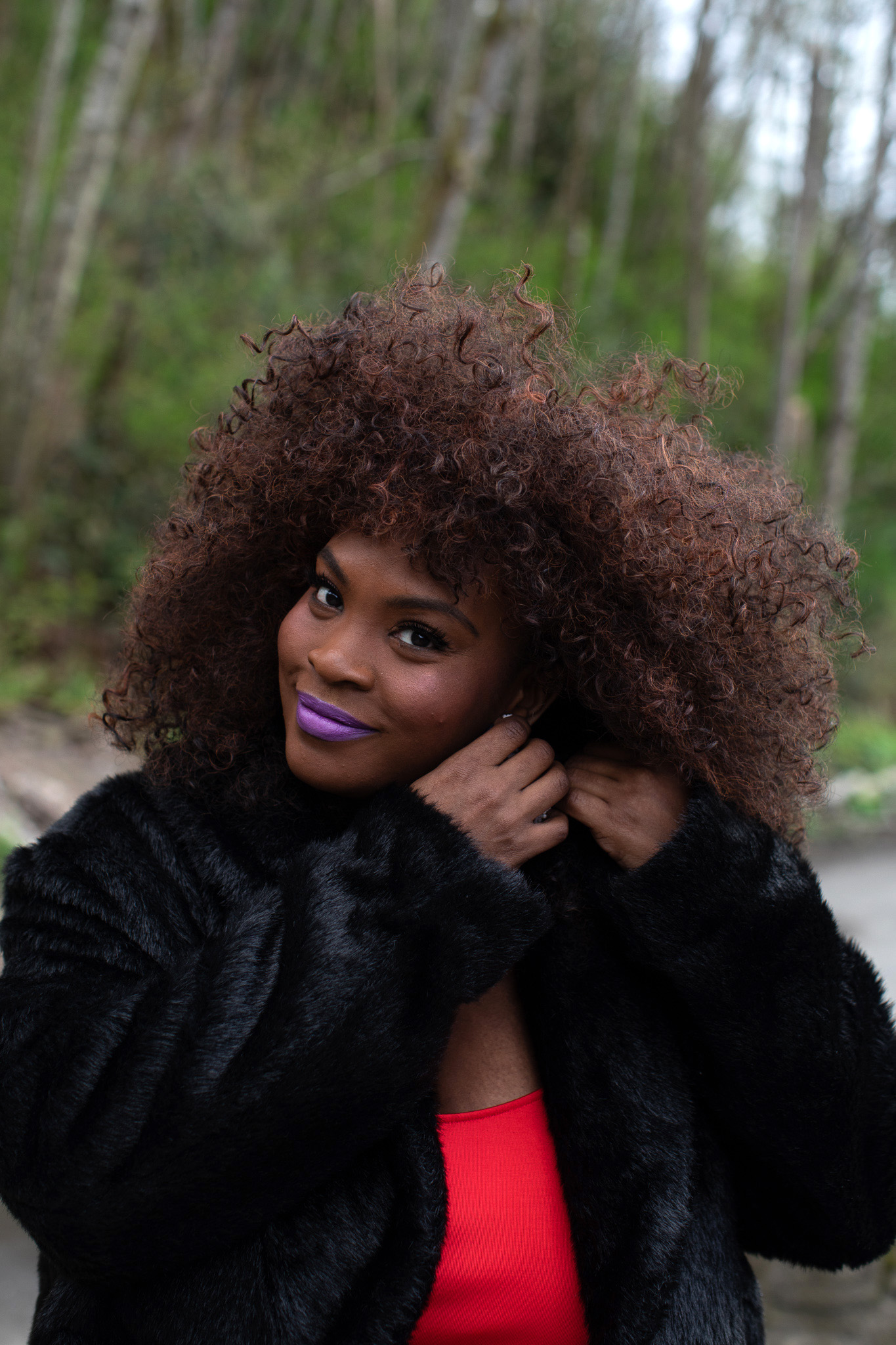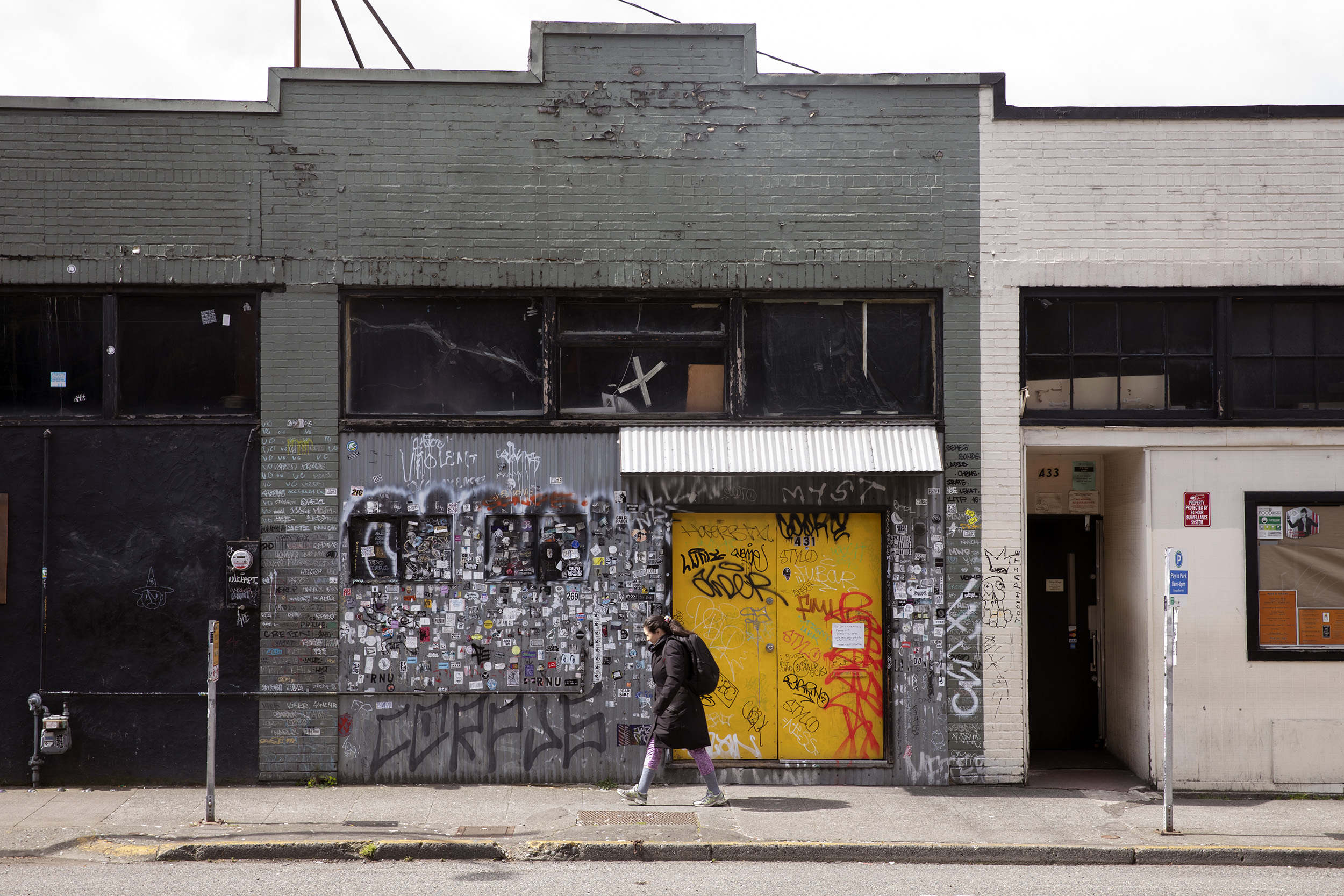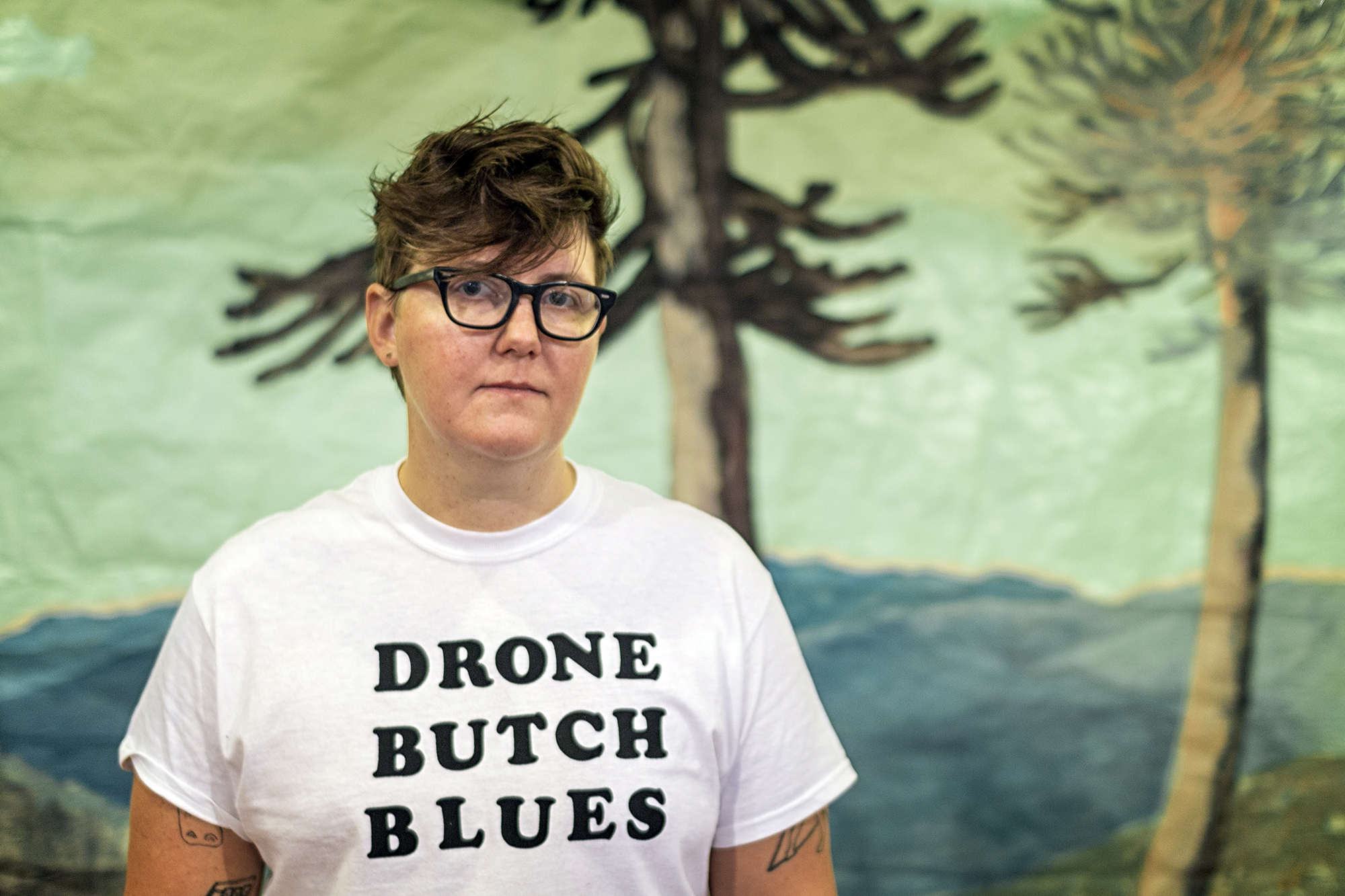A recent impact report by ArtsFund estimates that the 85 local cultural organizations the nonprofit surveyed will lose $74.1 million by the end of May, and that at least 1,997 employees in the sector have been furloughed or laid off. Those are early and very likely low estimates; more impact studies from local agencies are in the works. Brian J. Carter, executive director of 4Culture, King County’s arts and culture agency, says his rough “back of the napkin” math projects a whopping $150 million to $350 million in losses for cultural organizations across the county.
Particularly vulnerable are smaller organizations and individual artists, says Josef Krebs of local arts and culture consulting firm Scandiuzzi Krebs. “I don’t think we’re going to lose the major organizations,” Krebs says. “Frankly, they have support systems capable of sustaining them through this. What we are in danger of losing [are] smaller organizations … and people. So what we need to be able to provide to individual artists is the means to take care of their health through these times.”
Since coronavirus closures hit Washington in March, artists have seen proceeds from performances dry up in an instant — along with revenue from what is often artists’ main or secondary income stream: jobs in other highly impacted sectors, such as the service industry and education.
Hurting for cash more than ever, event producers wait for Brown Paper Tickets to pay up
The consequences are evident statewide: Between March 15 and 21, unemployment claims in the arts, culture and entertainment sector increased by 2,375% (that’s not a typo).
Worried about making rent, Seattle artists are grabbing whatever work they can — delivering groceries with Instacart, teaching music lessons online, even writing songs on commission for roughly $35 a pop, as does musician Sarah Pasillas of local band Antonioni. “I would be writing songs anyway,” she says, “[but] now it’s kind of helping me buy groceries.”
As the scale of the losses has come into focus in the past weeks, local governments and nonprofits, along with private fundraisers, have made millions in relief funds available for nonprofits and individual artists.
ArtsFund has launched a $1.5 million fund (which has since grown to $2.4M) to help the 118 arts organizations it works with keep the doors open and staff employed. The Seattle Foundation established a multimillion-dollar COVID-19 Response Fund for all sorts of local nonprofits, and has already provided grants to cultural organizations, including Central District art space Wa Na Wari, El Centro de la Raza and the Duwamish Longhouse and Cultural Center.
Many local arts and cultural organizations will also receive funding from the city of Seattle, which is pumping $1 million into cultural organizations it already funds through its Civic Partner and Youth Arts grant programs. In addition, Seattle is giving cultural nonprofits, small businesses and artist studios in city-owned facilities (such as Seattle Children’s Theatre and the Pacific Northwest Ballet) a two-month rent reprieve.
Seattle also released $100,000 to individual artists through the nonprofit Artist Trust and the Seattle Artist Relief Fund Amid COVID-19 (started as an online fundraiser by author Ijeoma Oluo, arts administrator Ebony Arunga and musician Gabriel Teodros), both of which are dispensing “rapid response” cash grants to artists. And, in the coming months, 4Culture’s Cultural Relief Fund plans to distribute $1 million: $2,000 grants for individual artists and other cultural workers who have lost income, and $5,000 grants for cultural and heritage organizations.
And on April 8th, a coalition of national arts grantmakers, including the New York nonprofit Creative Capital, launched a $10 million relief initiative. The fund will send out rapid and unrestricted $5,000 grants to artists experiencing financial distress due to loss of income related to COVID-19.

More money is coming down the line, though it's not clear yet when, how much or for whom.
The recent $2 trillion federal stimulus package, the Coronavirus Aid, Relief, and Economic Security (CARES) Act, includes $75M for the National Endowment for the Arts, 40% of which will be distributed to state arts agencies, including the Washington State Arts Commission. And then there are the many smaller, privately based relief funds created by nonprofits and ad hoc groups across the country, along with GoFundMe campaigns and other fundraisers.
For an artist trying to stay afloat, it can be overwhelming to know where to apply for what.
“I’m really deep in research about different funding relief,” says Seattle-based multimedia artist Ellie Dicola. “I think I have something like 16 or 17 different browser tabs open that I feel like I can’t close because I have to remember to keep tracking these things and checking for updates every day.”
Dicola, who lost her job as an office manager at a local architecture firm about two weeks ago, spends most, if not all, of her newfound time cobbling together freelance design and writing assignments while figuring out when and how she can apply for unemployment. She worked all of last year as a contractor in the creative sector, writing wall texts for art shows and organizing exhibitions, so now she’s not exactly sure how to apply for unemployment. “Navigating the governmental system is pretty time-consuming,” Dicola says. “I’m not really trying out new recipes and watching movies.”
Notes from the pandemic: Washington writers respond to coronavirus
Seattle-based sculptor Alair Wells, suddenly out of blacksmithing and metalworking teaching gigs, also feels like she’s been stuck in an online maze of forms. During a phone interview, Wells produces an angry cough after every sentence or so, courtesy of double pneumonia. The meds make her brain foggy, she says, making it hard to focus on the screen. “It’s a very detailed process,” she says. “I’m overwhelmed by even just a simple form.”
At this point, Wells has applied for unemployment (she says she didn't qualify) and roughly a dozen local and national relief funds. When she hears back, it's often a response "explaining how difficult of a time they are having with the overwhelming amount of submissions," Wells says.
For Wells and other self-employed artists and gig workers, the CARES act is welcome news. The relief package expands unemployment options for freelancers, gig economy workers and others who don’t usually qualify for unemployment benefits — including those who haven’t worked the typically required 680 hours in the previous year.
Wells will likely reapply for unemployment. For now, she’ll be covering part of her rent with a $400 check from the Seattle Artist Relief Fund Amid COVID-19. She's also expecting $2,500 from Artist Trust's relief fund, which will cover her expenses for this month. After that, she's not sure what her finances will look like.
“I'm finding that so many people are applying and the need is just far greater than the resources available.”
As coronavirus wilts the Skagit Valley Tulip Festival, a farm adapts
“The need definitely outstrips the available funding,” says Shannon Halberstadt, CEO of Artist Trust. Within three days of launching its own relief fund, Artist Trust received more than 700 applications. That number is now up to over 1,500, with requests totaling over $3 million — far more than the roughly $300,000 not yet disbursed by the fund ($200,000 has already gone out to artists across the state).
The Seattle Artist Relief Fund, now administered by local nonprofit LANGSTON, ran headfirst into the same problem. In late March, the fund was forced to halt applications because the requests (over 1,800) far exceeded the funds available. It needs a half million more dollars just to fund everyone who’s applied, says Tim Lennon, executive director of LANGSTON.
“We know this is just the tip of the iceberg, and there are a lot of folks who would still like to apply and need help faster than we can provide it,” Lennon says. “We are hoping that private philanthropy will step up and support this and other grassroots efforts in a significant way, and soon.”
So far, the Seattle Artist Relief Fund has disbursed over $320,000, much of it in the early days of the crisis, when artists’ incomes had already evaporated but other grants were not available yet.
Performer Chad Goller-Sojourner received an emergency cash injection from the fund soon after the cancellation of his college-theater tour of “Marching in Gucci,” a solo show about his coming-of-age as a Black gay AIDS activist in 1990s New York City. The cancellation sets him back at least $6,000. “Even if things get better soon,” he says, “this will impact my fall income as well, since I book my fall shows in the spring.”
“As artists, we live and work closer to the fault lines,” he says. “It’s not like we have $10,000 or $15,000 in our bank accounts. We’re all kind of broke.”
Working artists, Goller-Sojourner adds, “have nontraditional jobs and sources of income. If you are a drag queen performing for tips at the bar, where you make $200 in tips, how is your lack of recordable income going to affect whatever the government sends you?”
Local “Burlesque Goddess” Briq House, a performing artist, event producer, educator and LGBTQIA and sex-work advocate, sits with the same questions. All of her income (from producing and performing at events, healing workshops and some nannying) has evaporated, but it’s hard to quantify how much exactly, she says. Usually, nearly half of her income comes from tips.

“I haven’t even tried to file for unemployment because I assumed I wasn’t eligible,” House says. “A lot of artists feel the same way. It can be difficult to prove our income because not every gig or commission comes with a W-9 or 1099 form. Some jobs are heavily ticket-sale and tip-based.”
Seattle Independent Artists Sustainability Effort (SIASE), a newly formed coalition, hopes to “self-advocate” for artists and cultural workers, performers and arts collectives “who are slipping between the cracks.” SIASE fears many of the current funding streams are geared mostly towards larger nonprofits and cultural organizations. Many of those funds, says musician Julie-C, a co-founder of the coalition, are inaccessible to artists. In addition, she says, “We’re seeing that even though there are relief funds, it’s not going to be enough.”
Meanwhile, other coalitions have formed to advocate for organizations and businesses also finding themselves in a gray area, including for-profit music venues and DIY cultural spaces, which are facing steep, sudden drops in revenue as well.

The newly formed Washington Nightlife & Music Association, which includes local venues such as Neumos, Barboza, Clock-Out-Lounge, Chop Suey, Lo-Fi, The Vera Project, Re-Bar and many others, is ringing the alarm bell. The group is calling for cash assistance, rent forgiveness and reductions and other relief for independent, for-profit music venues that don’t qualify for nonprofit grants.
“The crucial info that most people don’t understand is that venues operate on a different timeline than, say, a bar,” says Steven Severin of Capitol Hill music venue Neumos and bar Life on Mars. While bars could reopen the same day mandatory closures or bans on gatherings are lifted, Severin says, at that point music venues would merely restart the slow-grinding machine of booking new bands and artists.
“It could be months if not a year or more before we’re back to anywhere near full-time operational,” Severin says. “That’s a lot of time to still have to pay all of our bills without income coming through the doors.”
Though many music venues would be eligible for the newly available federal Economic Injury Disaster Loan advances of up to $10,000 (which do not have to be paid back), Severin says that’s not enough. “We’ll take anything we can get, but if we’re going to have the opportunity to re-open our closed venues then we’re going to need a lot more,” Severin says. “I mean a lot more.”
The federal forgivable loan funding likely won’t be available to underground and volunteer-run art spaces that don’t operate in any official capacity, such as the volunteer-run, all-ages music venue The Black Lodge in South Lake Union and the Woodland Theater in Ballard.

“You can't get a low-interest small business loan if your space isn't incorporated; you don't qualify for local emergency relief funding without nonprofit status; and it is nearly impossible to find grants to cover gig workers and production staff if they are contracted or paid out from public events,” says Ricky Graboski, executive director of the Vera Project, an education nonprofit and all-ages arts concert space (which itself is eligible for relief funds from the city).
Last week, Graboski launched a relief fundraiser to rally support for DIY community spaces.
“A lot of these [DIY] spaces serve people of color, queer people, people who aren’t welcome in their families,” says artist Clyde Petersen. “As a constituency that is already deeply struggling to survive through gentrification, we definitely start to fall to the bottom of the pile.”
Petersen helps run the Woodland Theater, formerly known as The Josephine, with three other artists. In addition to a performance space, the small, scrappy venue features a screenprint shop and recording studio. “None of us are paid to run this space,” he says. “We do it because we are passionate about it and because it’s important to our community.”
Like many who believe such places are essential for young and emerging artists, Petersen fears that a lack of funding could shutter the few DIY spaces still left in Seattle. “Once those spaces close, they won’t reopen,” he says. “They will turn into fancy restaurants none of us can afford.”
Get the latest in local arts and culture
This weekly newsletter brings arts news and cultural events straight to your inbox.






